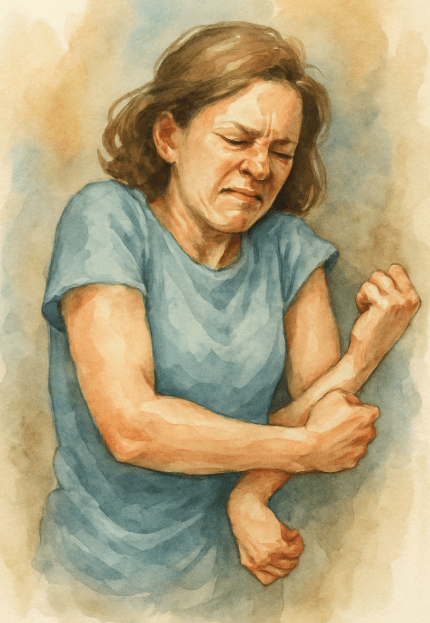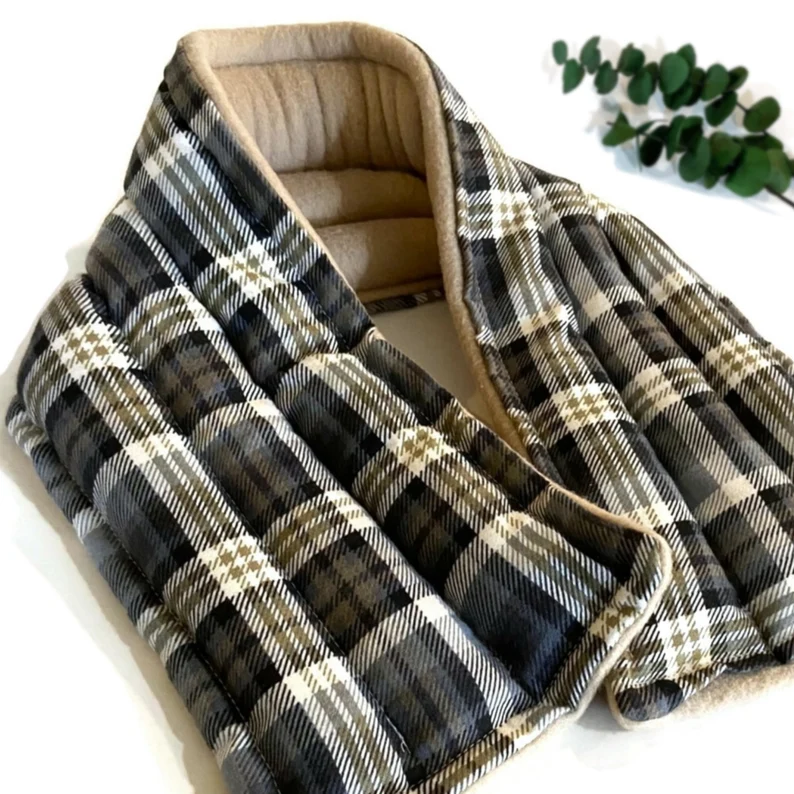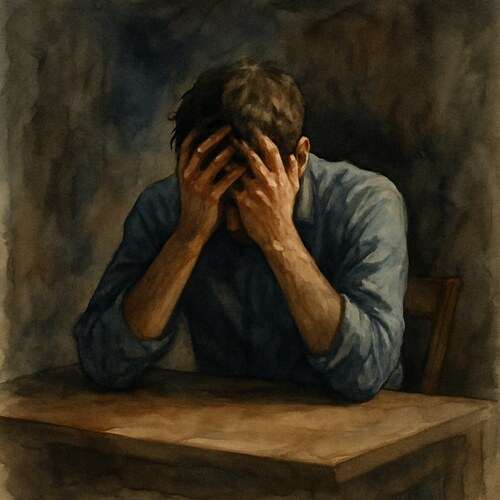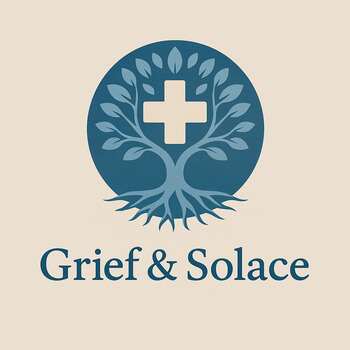Grieving Dystonia: When the Body Betrays Without Warning
Grief with dystonia twists into every movement, watching a body fight itself, and mourning the freedom that used to be effortless.

This post blends real grief with grounded knowledge. It isn’t clinical. It isn’t distant. It’s meant to sit beside you—not above you. The story you’ll read is meant to reflect what so many feel when living through or witnessing this condition: confusion, exhaustion, and quiet forms of courage.
If what you read feels familiar, please speak with your doctor. Your pain deserves more than silence.
She Danced Without Fear Before Her Muscles Forgot How
I still recall the day she stopped dancing… She didn’t say a word… She just stood there in the kitchen, the same song playing, sunlight streaming through the window—but her hands remained by her sides. There was no sway, no movement. She simply gazed at her legs as if they belonged to someone else, someone broken.
The tremors began to feel routine. Her neck tilted left, perpetually asking a silent question. She fumbled buttons, knocked over glasses, murmuring softly when her hand wouldn’t cooperate. We adjusted, switched forks to spoons, bought shoes without laces, and moved everything lower on the shelves. She loathed every change, claiming it was as if the house was mourning her while she was still alive.
🧠 Symptoms:
- Involuntary muscle contractions causing repetitive movements or abnormal postures
- Twisting or tremor-like motions that may be painful
- Task-specific symptoms, such as writer’s cramp or musician’s dystonia
- Progression from focal (single area) to segmental or generalized involvement
- Worsening with stress or fatigue, improvement during sleep
Therapy provided some help. Botox injections numbed the worst of it. But the trade-off was silence. Movement dulled, and expression slowed. She started to speak less…not because she lost her voice, but because her body could no longer mirror her thoughts. “It feels like being trapped in a marionette with tangled strings,” she confessed.
Yet, despite it all…one night, she smiled at me, hands trembling, chin bowed low, and whispered, “Do you remember when I used to dance?” I nodded in reply. She continued softly, “I still do, sometimes. In my head. It’s the only place I’m still free.”
Complications:
- Physical disability: Interference with daily activities and mobility
- Pain and fatigue: Due to constant muscle contractions
- Social and emotional impact: Embarrassment, anxiety, or depression
- Progression of symptoms: Potential spread to other muscle groups over time
Causes:
- Primary (idiopathic) dystonia: Often genetic, with no identifiable brain abnormality
- Secondary dystonia: Resulting from brain injury, stroke, infections, or exposure to certain medications
- Task-specific dystonia: Linked to repetitive activities and overuse
Risk Factors:
- Genetic mutations: Family history increases risk
- Age: Early-onset forms often begin in childhood or adolescence
- Repetitive movements: Occupational or recreational activities involving repetitive motion
- Exposure to certain medications: Such as antipsychotics or anti-nausea drugs
She never stopped dancing—she just took the rhythm inside where no one could steal it.
📘 Diagnosis & Treatment
Diagnosis involves:
- Neurological examination: Assessing motor function and identifying characteristic movements
- Imaging tests: MRI or CT scans to rule out structural brain abnormalities
- Electromyography (EMG): Evaluating muscle activity
- Genetic testing: Identifying hereditary forms
Treatment options:
Medications:
- Anticholinergics: To reduce muscle contractions
- Muscle relaxants: Such as baclofen
- Dopaminergic agents: For certain types of dystonia
- Botulinum toxin injections: Targeted muscle injections to reduce contractions
- Physical therapy: Improving mobility and reducing discomfort
- Deep brain stimulation (DBS): Surgical option for severe cases unresponsive to other treatments
Supportive therapies:
- Including occupational therapy and counseling
I know this is heavy, and I understand that the road ahead may feel like a tangle of loss and unanswered questions. But please hear this: you are not broken because you are hurting; you are not weak because you are afraid. You are living through something real, and survival itself is a kind of grace. You are allowed to struggle, you are allowed to hope, and you are allowed to not have all the answers today. Whatever comes next, you do not face it empty-handed; you carry every moment of love that shaped you, and that will always be enough to keep going.
🎀 Gifts to help With Dystonia
🏥 Everyday Comforts for Everyday Battles
Managing Dystonia often means needing a little extra help.
Sometimes it’s about restoring dignity, ease, or simply getting through the day with less pain.
These carefully chosen tools aren’t just items; they’re small bridges back to living.
This section is about finding practical support, never shame.
Heated Neck & Shoulder Wrap – Relief for Tension That Doesn’t Ask Permission
Dystonia often strikes the neck, shoulders, or jaw—locking muscles into painful, involuntary patterns. This heated wrap offers targeted warmth to overactive areas, helping reduce spasm intensity and ease tightness between episodes. It won’t stop the misfires, but it can make recovery more bearable. A tool for relief when the body won’t listen.
🌿 Paths to Healing Beyond the Map
Sometimes traditional medicine isn’t enough.
If you’re exploring gentle, alternative options to help with Dystonia,
you might find comfort in plant-based compounds like **CBD or CBG**.
*This section is not medical advice, just a door left open.*
USA Medical Pain Relief Total Pack – Gentle Support for a Nervous System in Revolt
Dystonia is more than discomfort, it’s neurological disobedience. This Total Pack blends CBD with inflammation-soothing botanicals and muscle-calming ingredients to help manage daily flare-ups. It’s not a fix. But it’s a layer of soft resistance against a body that seizes without warning. For the days when stillness takes work.
Need a Different Path Forward?
Every journey through grief looks different. Choose the next step that speaks to where you are now:
When You're Ready to Start Healing
Healing doesn’t mean forgetting.
It means finding small ways to carry your grief with strength and grace.
These are the stories, tools, and gentle steps to begin walking forward…at your own pace.
When You're Still in the Thick of It
Sometimes healing feels like a lie.
If you’re not ready to move on…if the pain still roars louder than the world wants to hear…this is the place where you’re allowed to feel it.
No sugarcoating. No pretending. Just truth.
When You're Holding on to Who’s Still Here
Grief reminds us to love louder.
If someone you love is still with you, this is your place to celebrate them, honor them, and create new memories while there’s still time.
Joy and sorrow can live side by side.






